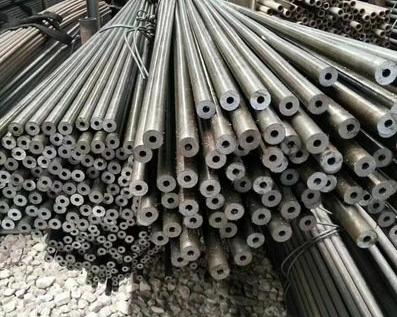Precision tube is a high-precision, high-brightness seamless pipe produced by cold drawing or cold rolling. Its inner and outer diameters can be accurate to within 0.2mm. While ensuring bending and torsional strength, it is light in weight, so it is widely used in the manufacture of precision mechanical parts and engineering structures. It is also commonly used to produce various conventional weapons, barrels, shells, bearings, etc.
embrittlement phenomenon
According to the tempering temperature range of brittleness of precision tubes, it can be divided into low temperature temper brittleness and high temperature temper brittleness.
Low-temperature tempering brittleness of precision tubes: After the alloy steel is quenched to obtain a martensitic structure, it is tempered at a temperature range of 250-400°C to make the steel brittle, and its toughness-brittleness transition temperature increases significantly. The brittle precision tube can no longer be eliminated by low temperature tempering, so it is also called irreversible temper brittleness. It mainly occurs in steel types such as alloy structural steel and low-alloy ultra-high-strength precision pipe. The fracture of the brittle precision tube is an intergranular fracture or a mixed intergranular and quasi-cleavage fracture.

Causes of low temperature temper brittleness:
(1) It is closely related to the precipitation of cementite at the grain boundary of prior austenite in the form of thin flakes during low temperature tempering, resulting in grain boundary embrittlement.
(2) Impurity elements such as phosphorus in the original austenite are also one of the causes of low temperature temper brittleness. High-purity precision tubes containing less than 0.005% phosphorus do not produce low temperature temper brittleness. Phosphorus undergoes austenite grain boundary segregation when heated by fire, and remains after quenching. Phosphorus segregates at the grain boundaries of prior austenite and precipitates at the grain boundaries of prior austenite during tempering of cementite. These two factors cause intergranularity and contribute to the occurrence of low temperature temper brittleness.
The alloying elements in the precision tube have a great influence on the low temperature temper brittleness. Chromium and manganese promote impurity elements such as phosphorus in austenite, thereby promoting low temperature temper brittleness. Tungsten and vanadium basically have no effect, and molybdenum reduces the toughness-brittleness transition temperature of low-temperature tempered precision tubes, but it is not enough to suppress low-temperature tempered brittleness. Silicon can delay the precipitation of cementite during tempering and increase its formation temperature, so it can increase the temperature at which low-temperature tempering brittleness of precision tubes occurs.
embrittlement phenomenon
According to the tempering temperature range of brittleness of precision tubes, it can be divided into low temperature temper brittleness and high temperature temper brittleness.
Low-temperature tempering brittleness of precision tubes: After the alloy steel is quenched to obtain a martensitic structure, it is tempered at a temperature range of 250-400°C to make the steel brittle, and its toughness-brittleness transition temperature increases significantly. The brittle precision tube can no longer be eliminated by low temperature tempering, so it is also called irreversible temper brittleness. It mainly occurs in steel types such as alloy structural steel and low-alloy ultra-high-strength precision pipe. The fracture of the brittle precision tube is an intergranular fracture or a mixed intergranular and quasi-cleavage fracture.

Causes of low temperature temper brittleness:
(1) It is closely related to the precipitation of cementite at the grain boundary of prior austenite in the form of thin flakes during low temperature tempering, resulting in grain boundary embrittlement.
(2) Impurity elements such as phosphorus in the original austenite are also one of the causes of low temperature temper brittleness. High-purity precision tubes containing less than 0.005% phosphorus do not produce low temperature temper brittleness. Phosphorus undergoes austenite grain boundary segregation when heated by fire, and remains after quenching. Phosphorus segregates at the grain boundaries of prior austenite and precipitates at the grain boundaries of prior austenite during tempering of cementite. These two factors cause intergranularity and contribute to the occurrence of low temperature temper brittleness.
The alloying elements in the precision tube have a great influence on the low temperature temper brittleness. Chromium and manganese promote impurity elements such as phosphorus in austenite, thereby promoting low temperature temper brittleness. Tungsten and vanadium basically have no effect, and molybdenum reduces the toughness-brittleness transition temperature of low-temperature tempered precision tubes, but it is not enough to suppress low-temperature tempered brittleness. Silicon can delay the precipitation of cementite during tempering and increase its formation temperature, so it can increase the temperature at which low-temperature tempering brittleness of precision tubes occurs.









